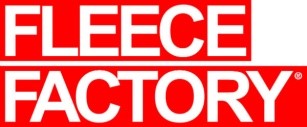What does the diesel engine and Kentucky Fried Chicken have in common – both were founded by two very strong willed individuals. This is the story of Rudolf Diesel and Harland Sanders – two visionary founders and legends who have created unique brands in their own way.
As told by Terry O’Reilly in Under the Influence, The Story Behind the Brand looks at Diesel and Sanders.
Under the Influence
If I were to ask you what a diesel is, you might say it’s an engine that runs on diesel fuel.
And you would be correct. But would you be surprised to learn that the diesel engine was invented by someone named Diesel? Rudolf Diesel was a gifted engineer who knew that 90% of the energy available in fuel was wasted in a steam engine.

His idea was to build an engine that didn’t need an external ignition to spark the fuel, but rather to create so much compression that the fuel would ignite on its own. An early prototype exploded and almost killed him, but it proved his theory correct – fuel could be ignited without a spark.
One year later in 1898, Diesel unveiled an improved engine that delivered more power less expensively. His invention ran with an efficiency of 75%, as opposed to the 10% efficiency of the modern-day steam engine.

Mr. Diesel’s first Diesel engine.
His invention was immediately employed to power cars, trucks, boats, electric and water plants, factories and oil fields. By 1912, there were 70,000 diesel engines working around the world, and Rudolf Diesel became a very rich man at the age of 40.
One night, in September of 1913, he boarded a ship to travel from Antwerp, Belgium to London, England, to attend an important meeting. He ate dinner in the dining room, then retired to his cabin around 10pm, asking for a 6:15am wake-up call. But the next morning, his cabin was found empty. His bed had not been slept in, his nightshirt was neatly laid out, and his watch was placed on the nightstand where he could see it from the bed.
Ten days later, the crew of a Dutch boat came across a corpse floating in the sea. While the body was too decomposed to identify, the crew did retrieve a wallet and I.D. card.
The name on it… was Rudolf Diesel.
The death was officially ruled a suicide, although many considered it unlikely. Murder was the most probable cause of death, as his invention threatened the profits of many high-powered industries, like the coal business.
In any event, the case was never solved, and the founder of one of the most enduring inventions of our time had mysteriously vanished.
In the world of marketing, founders play a vital role. They are not only the visionaries, creating extraordinary products, but many times, those founders are also the spokespeople for their companies.
It’s an interesting marketing strategy, as no one can speak with more passion about a product than the founder.
But on the flip side, founders are not invincible, nor are they above the law. When companies tie their fortunes to their founders, it can sometimes cause a lot of drama.
And it makes for some fascinating stories, when the founder is the face of a brand…
Choosing to put the founder in commercials is always a big decision. They might be the brains behind the operation, but should they be the face?
And what does a company do if something happens to the founder?
Back in 1930, a man is operating a service station in Corbin, Kentucky.
He begins to cook meals for hungry travelers who stop for gas. He doesn’t have a restaurant, so he invites customers to sit at his own dining room table.
His name… is Harland Sanders.

The man chickens feared.
One thing becomes clear – customers love his food, and he realizes that busy people appreciate a good, quick meal.
His food became so popular that he moved across the street to open a motel and restaurant to increase capacity.
He called it Sanders Court and Café.

The humble beginnings of the KFC empire.
As his fame grew, the Kentucky governor made Harland Sanders an honourary Kentucky colonel in 1935, to recognize his contribution to the state’s cuisine. Over the next ten years, Sanders noticed that his chicken was the favourite menu item, so he started to perfect a secret recipe of eleven different herbs and spices.
Things went exceedingly well… until something happened in 1955.
A new Interstate highway was built. It diverted all the traffic away from his restaurant. The business he had spent 25 years building was gone in an instant. So he auctioned off the restaurant and all of its contents. And decided to devote himself to franchising his secret recipe for fried chicken.
It’s a remarkable moment, because Harland Sanders was 65 years old.
But he had instincts for marketing and a knack for selling. He began by re-branding himself. He modeled his new look after an old Kentucky colonel he used to see in cartoons growing up. White suit, black string tie, goatee and moustache.

Colonel Sanders created his unique look as a branding statement.
As he later said, he dressed to stand out.
Then he jumped into his 1949 Ford and criss-crossed the U.S. trying to convince restaurant owners to add his chicken to their menus.
The first true stand-alone franchise opened in Utah. A local sign painter coined the name “Kentucky Fried Chicken” which the Colonel loves, because it distinguishes his product from southern fried chicken.

The very first KFC franchise in Utah.
A franchisee named Dave Thomas in Columbus, Ohio, develops the rotating bucket sign that would become world famous.

The famous spinning KFC bucket was created by franchisee Dave Thomas, who would later create Wendy’s.
When a local TV commercial is made that shows someone eating the chicken and licking his fingers, viewers call in to complain about the lack of manners – prompting the manager to defend the commercial by saying, “Well, it’s finger lickin’ good!”
And in that moment, one of the best known slogans of the 20th century was born.

The world-famous slogan, coined while defending a TV commercial.
Within 10 years, Colonel Sanders had over 600 franchises across the nation.
Broke at 65, he was now rich at 75.
The Kentucky Fried Chicken business grew so quickly, it began to overwhelm the Colonel, so he sold it to a group of investors in 1964.
The Colonel was given a lifetime salary, and he signed an agreement to be the company’s quality controller and, importantly, its face and trademark.
In the mid-60s, the Colonel got into his first disagreement with head office. They moved their headquarters from Kentucky to Nashville, which incensed the Colonel. Then the company prepared to expand into Canada, but the Colonel blocked that move, saying the sale agreement only covered the U.S.
An out-of-court settlement was reached, and the Colonel retained the rights to Kentucky Fried Chicken in Canada. He actually moved to Mississauga in 1965 to oversee his operations, and would live in a modest bungalow on Melton Drive until his death 15 years later.

Colonel Sanders’ home in Mississiauga.
Two years later, KFC sued Sanders for libel after the Colonel publically described their gravy as “wallpaper paste.” Suggesting it was “Finger lickin’ bad.” KFC lost the case.
It was a delicate time for Kentucky Fried Chicken, as there’s nothing more damaging than a messy legal battle with your own spokesperson.
Then, in 1980, Colonel Harland Sanders – the man who began Kentucky Fried Chicken at 65 – passed away at the age of 90.

The final resting place of Colonel Harland Sanders in Kentucky.
Meanwhile, the company was faced with a big dilemma. Their spokesperson was dead. Everything from the packaging to the advertising to the store signage was completely tied to the Colonel – in 48 countries – around the world.
For many years, the company struggled to keep his image alive in its marketing.
At one point, an actor that resembled the Colonel was hired, but viewers weren’t buying it. Then an animated Colonel was created, voiced by actor Randy Quaid.
Viewers just found it unsettling.
Finally, after many fits and starts, and experiments and failures, KFC decided to finally distance itself from its southern founder.
It was a lesson for many companies – that the death of a founder/spokesperson had to be handled with great sensitivity. And that the worst thing you could do was try to bring them back from the dead.
Today, over 60% of adults 18 to 25 don’t know who the Colonel is, and the ones who have heard of him think he was the creation of KFC – instead of the other way around.
But KFC has survived. And a stylized rendering of the Colonel’s face still graces their logo. The company has 18,000 locations, head-office is back in Kentucky, and annual revenues top $15B.
And that’s a long way from the very first franchise in the early 50s.





Comments are closed.